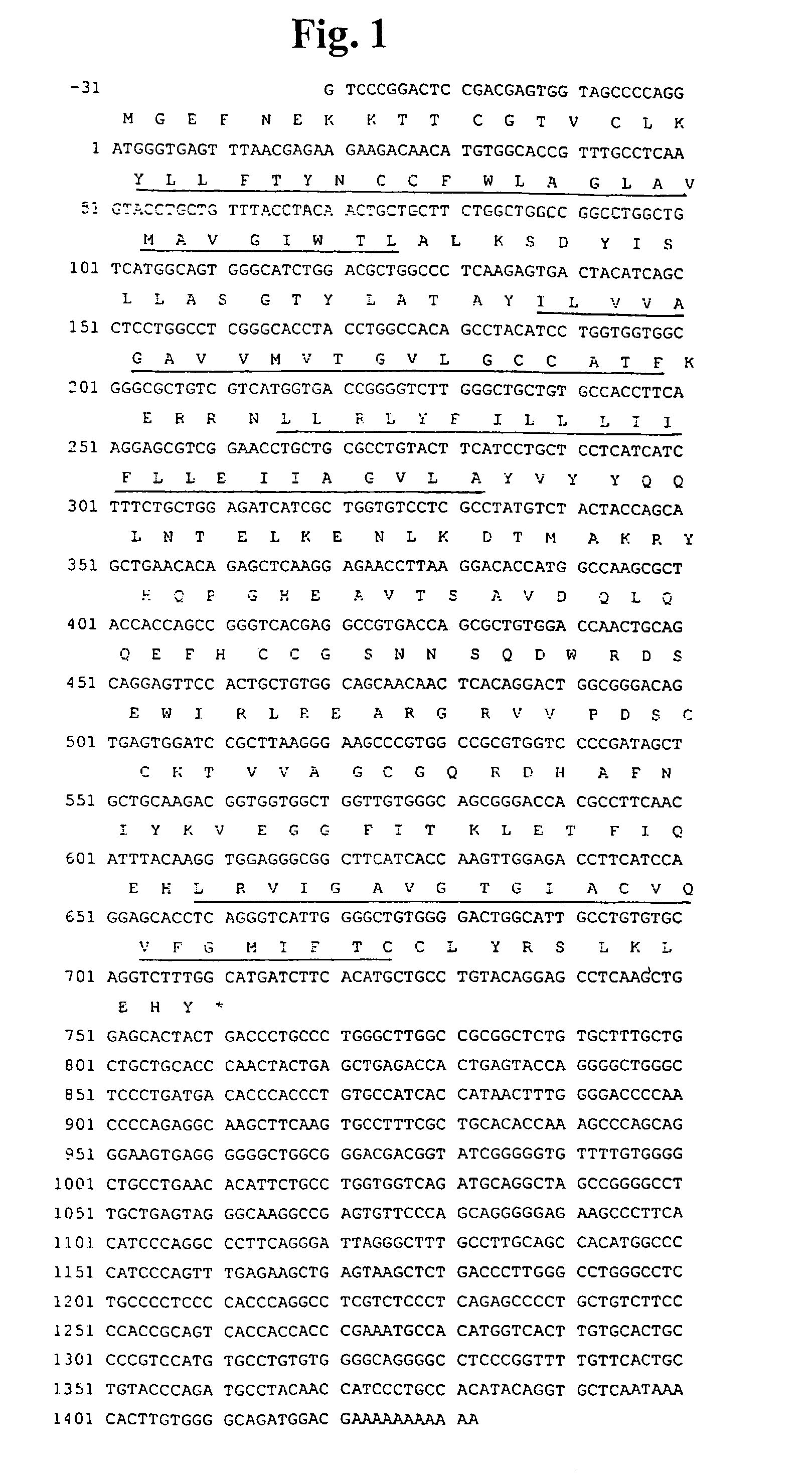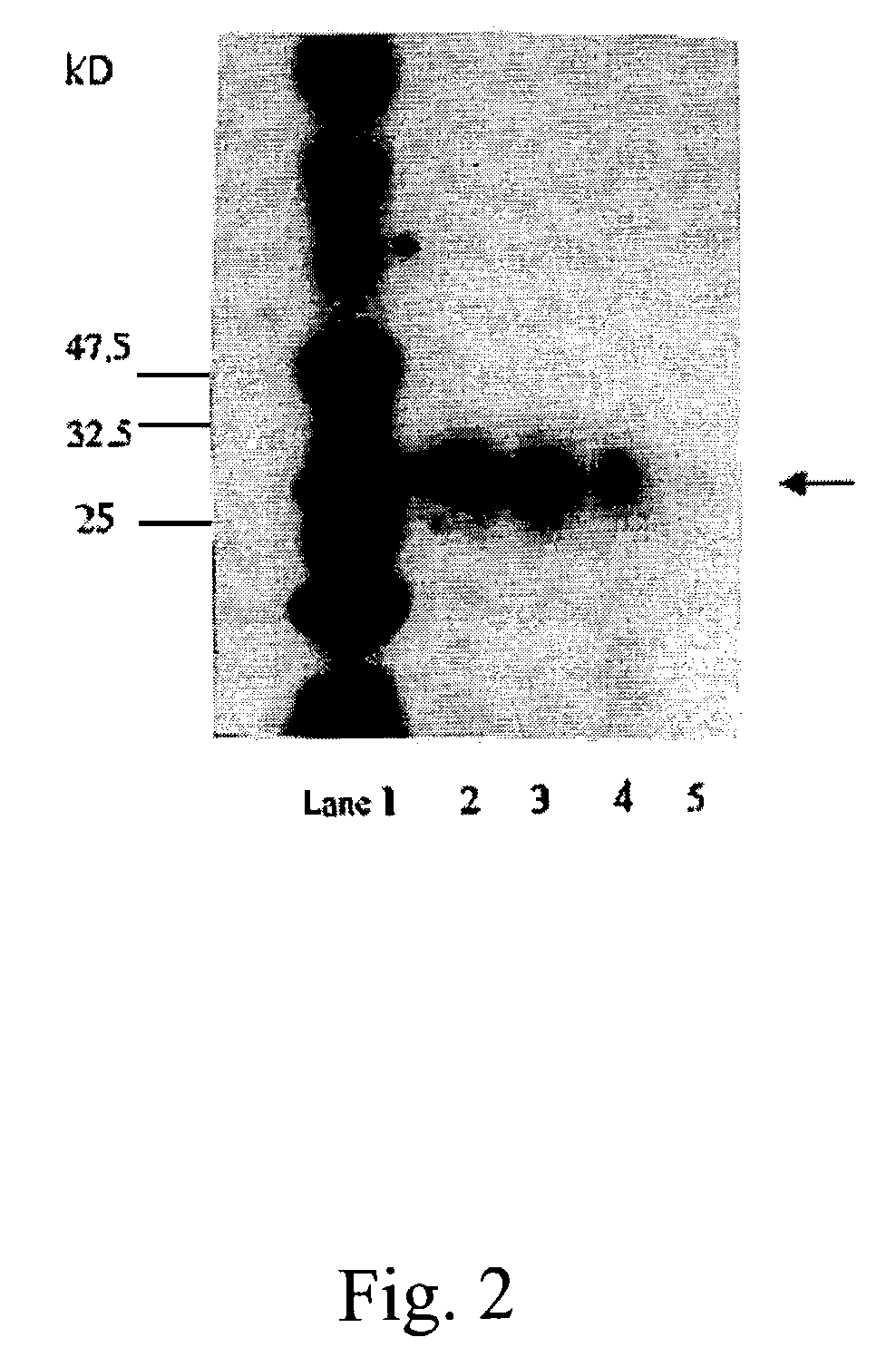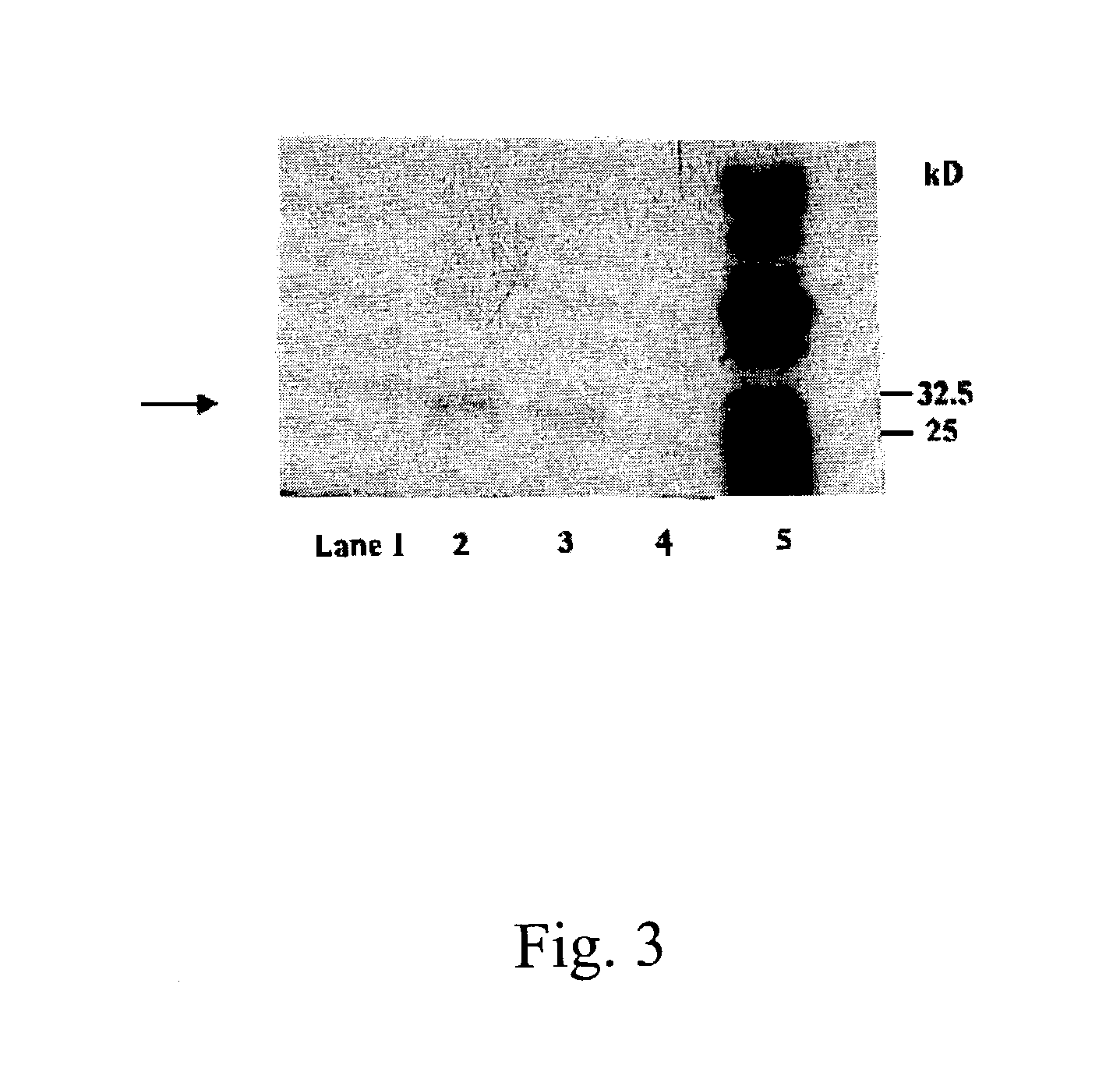Identification and applications of porcine reproductive and respiratory syndrome virus host susceptibility factor(s) for improved swine breeding and development of a non-simian recombinant cell line for propagation of the virus and a target for a novel class of antiviral compounds
a technology host susceptibility factor, which is applied in the field of identification and application of porcine reproductive and respiratory syndrome virus host susceptibility factor, can solve the problems of increased number of stillborn, mummified and weak-born pigs, and delayed return, and achieves the effect of conferring susceptibility
- Summary
- Abstract
- Description
- Claims
- Application Information
AI Technical Summary
Benefits of technology
Problems solved by technology
Method used
Image
Examples
example 1
[0060]This example identifies and describes the cells, virus and monoclonal antibodies used in later experiments, prepares the λ Zap expression library, details the cloning and probe preparation of the 3′UTR of the PRRSV genome, describes the screening of the cDNA library for cells containing CD 151, describes the transfection of cells with plasmid containing CD 151, and verifies that the transfection was successful and that CD 151 binds to the 3′UTR of PRRS virus.
Materials and Methods:
[0061]The MARC, COS-7, Vero, CL 2621, MA-104 (derivatives of African green monkey kidney cells) and BHK-21 (Baby hamster kidney) cell lines were used in the study. The MARC cells were grown in Eagle's minimum essential medium (MEM) (Life Technologies, Inc., Gaithersburg, Md.) supplemented with 10% fetal calf serum (FCS; Hyclone, Logan, Utah). Dulbecco's minimum essential medium (Life Technologies, Inc., Gaithersburg, Md.) with 10% FCS was used to cultivate BHK-21 cells. The ATCC VR 2332 strain of PRRS...
example 2
[0070]This example determined that CD 151 expression by BHK-21 cells rendered the cells susceptible to PRRS infection.
Materials and Methods:
[0071]To determine whether BHK-21 cells expressing CD 151 (obtained by stable transfection) become susceptible to PRRSV infection, immunohistochemical staining was performed. Cells were seeded in 24 well plates and infected with PRRSV at a multiplicity of infection (MOI) of 0.01 at 37° C. for 1 hour. Infectivity was determined by immunohistochemistry 24-hours post infection. Cells were fixed in acetone-PBS (3:1, v / v) for 10 minutes at 4° C. and air-dried for 5 minutes. The primary antibody, anti-PRRSV nucleoprotein MAb (1:1000 dilution in PBS) was added and incubated for 1 hour at 37° C. Cells were then washed once in PBS for 10 minutes and incubated with anti-mouse IgG biotinylated antibody (Vector Labs, Burlingame, Calif.) for 30 minutes at room temperature (RT). After washing once in PBS for 10 minutes, avidin-biotin enzyme complex (Vector La...
example 3
[0073]This example utilized a virus burst assay to assess the effects of MARC cells which overexpress CD 151.
Materials and Methods:
[0074]The monolayer of MARC cells overexpressing CD 151 (obtained by stable transfection as described in Example 1) was infected with PRRSV at a MOI of 0.1 at 37° C. for 1 hour. Cells were washed twice in MEM and overlaid with 1 ml of MEM supplemented with 1% FCS. After incubating for 18 hours, cells were lysed by freeze thawing and cell debris was removed by centrifugation at 12,000×g for 5 minutes. The amount of virus in the supernatant was titrated by plaque assay using parent MARC cells. To determine if there are any effects of overexpression of CD 151 on PRRSV replication, MARC cells were examined with respect to the effect on infectivity level. The MARC cells (both parent and transfected progeny cell line overexpressing CD 151) were infected with equal amounts of plaque purified PRRSV and allowed to grow for one complete replication cycle (18 hours...
PUM
| Property | Measurement | Unit |
|---|---|---|
| volume | aaaaa | aaaaa |
| concentration | aaaaa | aaaaa |
| concentration | aaaaa | aaaaa |
Abstract
Description
Claims
Application Information
 Login to View More
Login to View More - R&D
- Intellectual Property
- Life Sciences
- Materials
- Tech Scout
- Unparalleled Data Quality
- Higher Quality Content
- 60% Fewer Hallucinations
Browse by: Latest US Patents, China's latest patents, Technical Efficacy Thesaurus, Application Domain, Technology Topic, Popular Technical Reports.
© 2025 PatSnap. All rights reserved.Legal|Privacy policy|Modern Slavery Act Transparency Statement|Sitemap|About US| Contact US: help@patsnap.com



